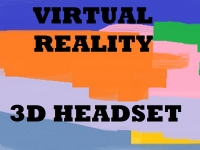Miscellaneous
VIRTUAL REALITY RECIEVES LOTS OF ATTENTION FROM ENTERTAINEMENT INDUSTRY
FROM EXPERIENCE FROM REAL WORLD

(Source: © Ruby BIRD & Yasmina BEDDOU)
When discussions carry on how useful and progressive is the VR, voices come out saying that VR has already failed. This argument goes back to what we know from the past 80s and 90s. Even if we cannot compare with now. It is still an invaluable tool in fields of simulation, research, design and many other industries outside the consumer landscape. By referring to Nintendo's console from 90s, that wasn't Virtual Reality system by any measure that we recognize today.
The 3D Television failed and VR is 3D, so it will fail too. This argument comes also in mind. 3D Television failed because people don't like to wear something on their head while enjoying entertainment. And since VR headsets are like a bigger and heavier version of 3D glasses, VR will fail. But the size is clearly not a limitation as large headphones are becoming very popular. The fact is that there is an inverse relationship between how much someone cares about how they look and the experience they are getting.
As long as the experience provided by the VR headset is good enough, people will be willing to wear one. 3D TV didn't fail because people didn't want to wear glasses but only because the added benefit of 3D TV compared to normal TV did not justify wearing glasses.
The 3D effect is ultimately limited by the size of the frame. A 3D TV may be able to make an object in the center of the screen appear floating towards you, but as soon as that object moves to the edge of the screen, it cannot go beyond it out into space as its stereoscopic distance suggests.
The 3D effect is ultimately limited by the size of the frame. A 3D TV may be able to make an object in the center of the screen appear floating towards you, but as soon as that object moves to the edge of the screen, it cannot go beyond it out into space as its stereoscopic distance suggests.
Ruby Bird Virtual Reality Glasses Television Headset Cinema Entertainment 3d System Real Life Model Interaction
Liability for this article lies with the author, who also holds the copyright. Editorial content from USPA may be quoted on other websites as long as the quote comprises no more than 5% of the entire text, is marked as such and the source is named (via hyperlink).






